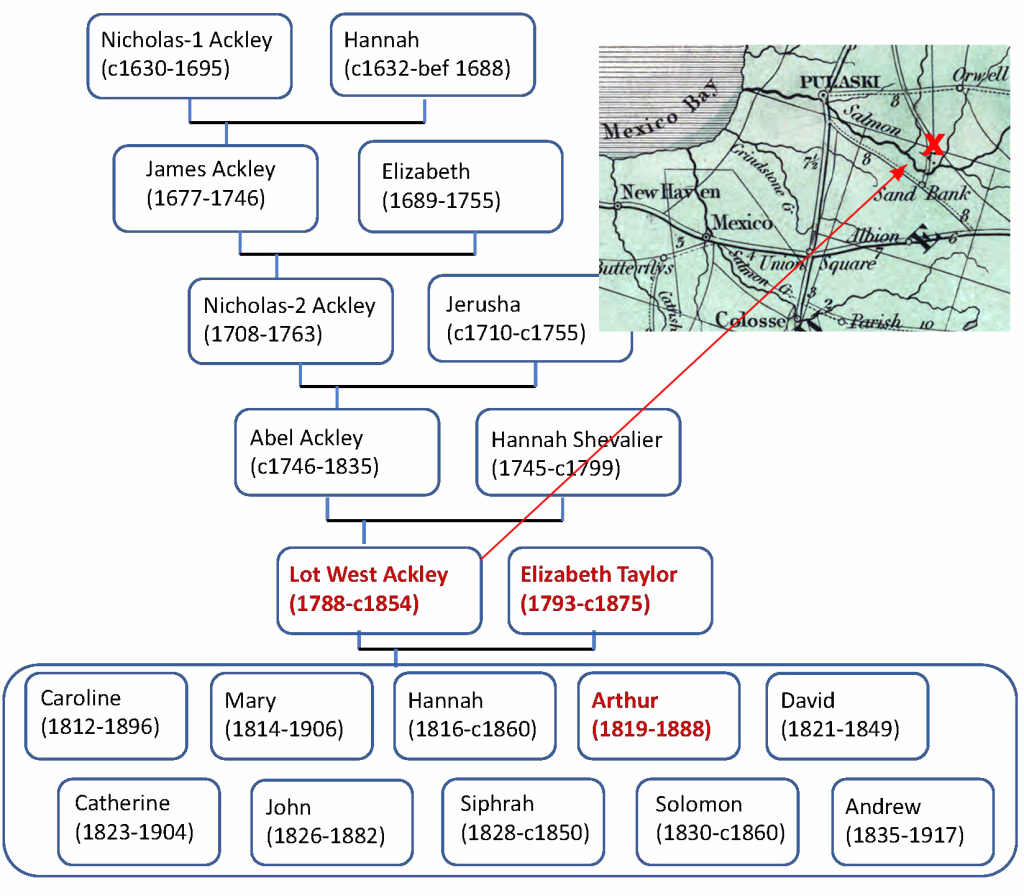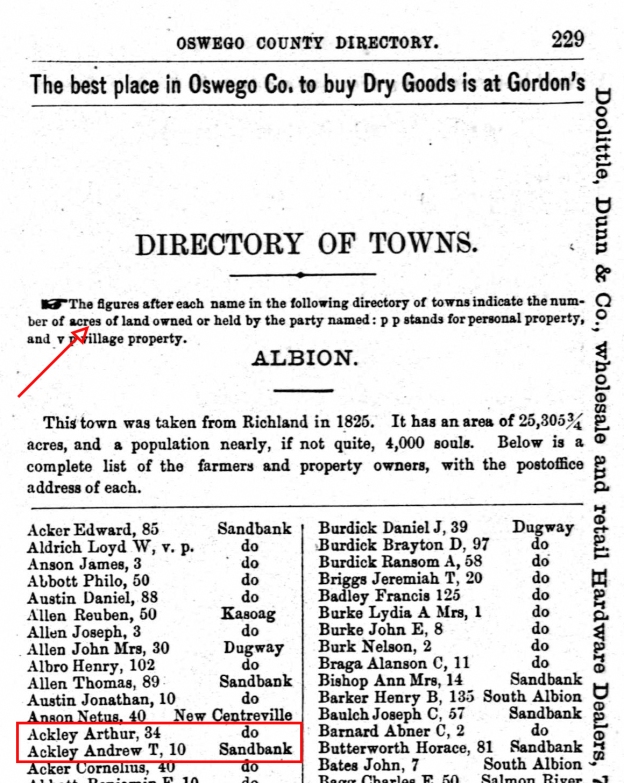Tracing my mother’s paternal Ackley genealogy began years ago and has now reached its conclusion.
The information gathered has been made available on this website as draft chapters,* with the idea that these would be combined into a series of books (see graphic). All three books now are available in print from Lulu.com or from Amazon and other online booksellers; two also are available as eBooks. The diagram below shows how the generations are grouped.

The Discovering Nicholas Ackley book is available only in print, as of now, from Lulu.com and other online booksellers.
The Discovering James Ackley, Nicholas Ackley, and Abel Ackley book is available both in print and as an eBook. The print book is available from Lulu.com and online booksellers. The eBook is available from Lulu.com. The purpose of the eBook is to make the information available at a far lower price than is possible with print versions. It contains the same information as the print book.
The Discovering Lot Ackley and Descendants book is available in three versions. A print version on higher quality paper allows the photographs included to be reproduced with much more detail. For those who wish to have a print book at a lower price, the same book is available printed on standard quality paper. It is not nearly as pretty, but it contains the same information. Both books are available on Lulu.com and from online booksellers. An eBook is available from Lulu.com, again to make the same information available at a lower price than print versions allow.
Links for purchasing are posted on the Books Available page on this website or easily can be found through an online search. Links to pdfs that contain the table of contents for each book also are posted on the Books Available page to provide a glimpse of what each contains.
Even though the project is “done,” my interest in it is not. Anyone with questions, or information I may have missed, please contact me using the form on this website.
* The draft chapters were removed from the website primarily because the final versions are written in a way that makes it difficult to re-post them as separate chapters.








